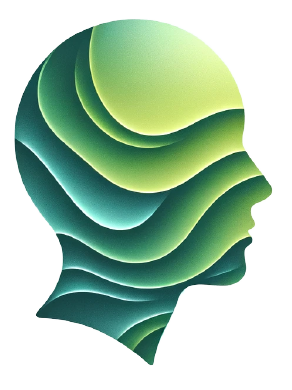Triptans for Migraines: A Comprehensive Guide


Triptan medications have long been a mainstay of migraine treatment. In this article, we delve into what triptans are, how they work, potential triptan side effects, alternatives, and considerations for special populations such as pregnant individuals.
Key takeaways
- A wide array of triptans come in many formats: nasal spray, injection, tablets.
- Though generally regarded as safe, triptans have potentially serious side effects.
- Learn who shouldn’t use triptans and what triptan alternatives exist.
What Are Triptans?
Triptans are a class of drugs specifically designed to treat migraines. They work by targeting serotonin receptors in the brain, which are believed to play a key role in the development of migraines. By binding to these receptors, triptans help to alleviate migraine symptoms such as pain, nausea, and sensitivity to light and sound.
There are several different triptan medications available on the market. This list of triptans includes the most-commonly prescribed triptans:
- Sumatriptan (often sold under the brand name Imitrex)
- Zolmitriptan (Zomig)
- Zizatriptan (Maxalt)
- Eletriptan (Relpax)
- Naratriptan (Amerge)
Triptans for migraines come in various forms, including oral and orally disintegrating tablets, nasal sprays, and injections.1 Orally disintegrating triptans are a good option for migraine patients who also have trouble swallowing. Injection and Sumatriptan nasal spray are options for patients who experience nausea and vomiting before the orally administered medication is absorbed.
Triptans’ Mechanism of Action
Triptans work by constricting blood vessels and blocking the release of certain chemicals in the brain that are involved in the migraine process. Specifically, they bind to serotonin receptors, reducing inflammation and inhibiting pain signals. This mechanism of action helps interrupt the migraine “cascade” to provide relief from symptoms.
A Closer Look at Sumatriptan: Understanding Imitrex
Sumatriptan, commonly known by its brand name Imitrex, is one of the most widely prescribed triptans.
Sumatriptan nasal spray and injection are used to treat migraines and cluster headaches. The tablets are for migraines only. In the US, all sumatriptan formulations are prescription-only. In other countries (notably Germany and the UK) over-the-counter sumatriptan is available.
While sumatriptan can be highly effective in relieving migraine symptoms for many individuals, it is important to be aware of potential sumatriptan side effects.
Common sumatriptan side effects:
- Sensations of tingling or warmth: Some individuals may experience tingling or warmth, particularly in the face or extremities shortly after taking sumatriptan.
- Dizziness or drowsiness: Sumatriptan may cause dizziness or drowsiness. It is important to avoid activities that require alertness, such as driving or operating heavy machinery, until you know how sumatriptan affects you.
- Nausea or vomiting: While sumatriptan is often effective in relieving nausea associated with migraines, nausea or vomiting can occur as a side effect.
- Tightness or pressure in the chest: Some individuals may experience sensations of tightness or pressure in the chest after taking sumatriptan. In rare cases, this may be a sign of a serious cardiovascular reaction and should be reported to a healthcare provider immediately.
- Sumatriptan injection site reactions: Sumatriptan is available in injectable form for individuals who require rapid relief from migraine symptoms. Injection site reactions such as pain, redness, or swelling may occur.
It is important to talk to your healthcare provider about any side effects while taking sumatriptan. He or she can help determine whether sumatriptan is the right medication for you or whether an alternative treatment may be more appropriate.
Who Should Not Use Triptans for Migraine?
Because triptans can constrict coronary and limb arteries, they are not prescribed for patients with a wide range of health issues, including:
- A history of heart attack
- Coronary artery disease
- Cerebrovascular accidents
- Hemiplegic migraines
- Uncontrolled hypertension
- Peripheral vascular disease
- Kidney or liver damage
- An age of 65 years or more.2
Triptan Medications and Pregnancy
Pregnancy introduces unique considerations when it comes to migraine treatment. While triptan medications have been widely used to treat migraines in non-pregnant individuals, their safety during pregnancy is not well established.
All triptans, except for sumatriptan, are contraindicated in pregnancy and breastfeeding. Some studies have suggested a possible association between the use of triptans during pregnancy and an increased risk of certain adverse outcomes, such as preterm birth or low birth weight.
As a result, many healthcare providers recommend avoiding triptans during pregnancy.
Alternatives to Triptans
Since some individuals side effects or have health issues that prevent them from taking triptans for migraines, it’s important to explore triptan alternatives that offer comparable migraine relief:
- Nonsteroidal anti-inflammatory drugs (NSAIDs) such as ibuprofen or naproxen can be effective in relieving mild to moderate migraine symptoms. With NSAIDs, however, risks include gastric bleeding and developing Medication Overuse Headaches (MOH).
- Prescription drugs, such as ergotamines or gepants, may be prescribed for individuals who do not respond to or cannot tolerate triptan medications. Again, these triptan alternatives come with potentially serious side effects and risks.
- “Natural sumatriptan.” One 2023 study of 100 people who have migraines with aura showed ginger powder worked as well as sumatriptan when used for one month. Ginger made headache less intense and they experienced fewer side effects than people in the study who took sumatriptan.3
- Petadolex® brand butterbur. Butterbur has long been used as a headache remedy. Most recently, a patented process allowed high-quality active ingredients (petasins and isopetasins) to be extracted from butterbur without also extracting the liver toxins that occur naturally in the plant. Petadolex® is the brand name for this unique, purified extract. In its use as a migraine preventative, one study found Petadolex offered substantial reduction in migraine frequency of nearly 50%. This result is in line with the effectiveness of prescription medicines used to reduce headache frequency. Petadolex has also been found safe and effective in children with migraine as well.4
- Dolovent™ dietary supplement. Research has detected deficiencies of magnesium, riboflavin (Vitamin B2) and Co-enzyme Q10 in the brains of people who suffer migraine. Recommended by doctors (including neurologists), Dolovent provides these and other nutrients specifically targeted at maintaining healthy brain and central nervous system functioning. Like Petadolex, Dolovent’s effectiveness in reducing migraine attacks and their intensity has been found comparable to prescription medications, including triptans.
Additionally, lifestyle modifications such as stress management techniques, dietary changes, and regular exercise may be effective natural alternatives to triptans. It is important to work with a healthcare provider to develop a comprehensive treatment plan that addresses your individual needs and preferences.
Conclusion
In conclusion, triptans offer a valuable option for migraine relief, but they are not without their limitations. This article provides a good starting point for understanding how triptans work, their potential side effects, and alternative treatment options. The next step is to talk to your healthcare provider about whether triptan medications are suitable treatment options. He or she can help you weigh the potential benefits and risks and develop a personalized migraine treatment and prevention plan that meets your needs.
Sources
- Gladstone JP, Gawel M. Newer formulations of the triptans: advances in migraine management. 2003;63(21):2285-305. [PubMed] [Reference list]
- Duong S, Bozzo P, Nordeng H, Einarson A. Safety of triptans for migraine headaches during pregnancy and breastfeeding. Can Fam Physician. 2010 Jun;56(6):537-9. [PMC free article] [PubMed] [Reference list]
- Johnson, J. Natural Alternatives for Migraine & Headache [Originally presented during Migraine & Headache Awareness Week 2019]. HeadacheAustralia.org. https://headacheaustralia.org.au/natural-alternatives-migraine-headache/
- Borlak, J. (2022). Petasites for Migraine Prevention: New Data on Mode of Action, Pharmacology and Safety. A Narrative Review. Frontiers in Neurology. https://doi.org/Published online 2022 Apr 26. doi: 10.3389/fneur.2022.864689

Natural Remedies
6 May 2024
10 min read
Migraine with Aura: How to reduce daily impact and long-term health risks
Migraines with aura are not just painful—they carry significant health risks, including an increased likelihood of stroke, seizures, blood clots, and heart attacks, especially for women. Aura symptoms, such as visual disturbances, tingling sensations, or speech difficulties, are linked to neurological waves in the brain, triggered by factors like stress, hormonal changes, and nutrient deficiencies.

Mind-Body Techniques
2 Aug 2024
5 min read
Triptans for Migraines: A Comprehensive Guide
Triptan medications have long been a mainstay of migraine treatment. In this article, we delve into what triptans are, how they work, potential triptan side effects, alternatives, and considerations for special populations such as pregnant individuals. What Are Triptans? Triptans are a class of drugs specifically designed to treat migraines. They work by targeting serotonin […]


